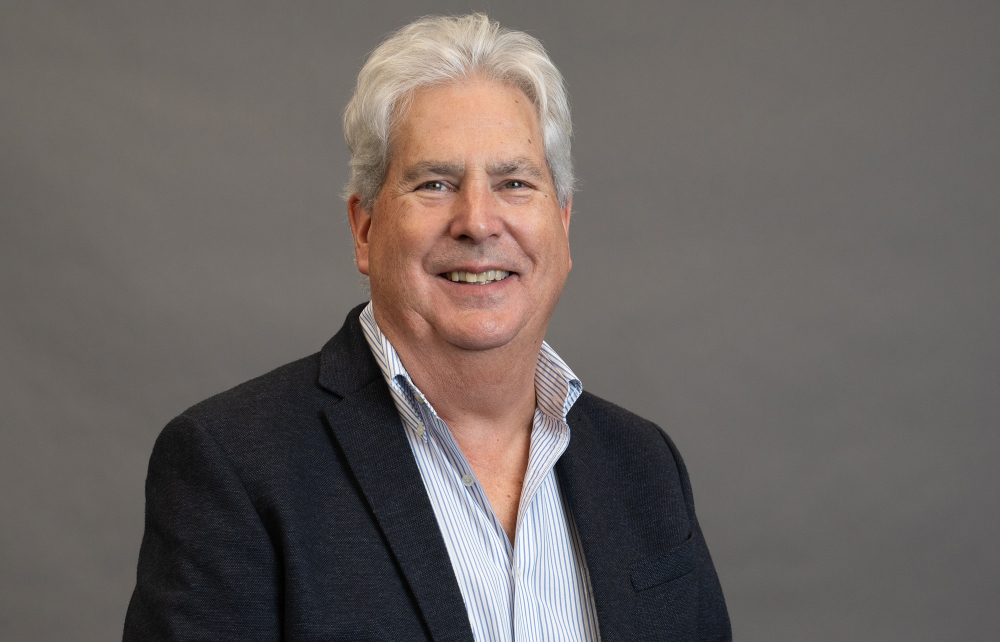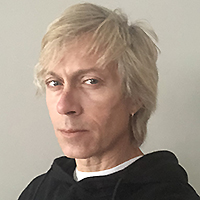For Bob Snelgrove, founder of GerrAudio Distribution, serving clients is as much about representing cutting-edge technology as it is about forming lasting partnerships. “Fundamentally, as a distribution company, we ship and receive goods, but our core business strengths are really about relationships, support, and trust,” he says. “It’s always been that way. We’re about solving problems for any application where audio technology is part of the puzzle. And a lot of care that goes into that. We don’t just sell stuff and help people feel good about their purchasing decisions. Five, 10, 20 years later, we’re still there, willing to help out and go the extra mile for users of our technology.”
Although Snelgrove grew up in the live performance industry (Gerr’s core business), the applications they address extend well beyond that. “As the company evolved, we found ourselves inside nuclear power generating stations, healthcare facilities, large sporting arenas, major broadcast studios, government and educational institutions… the list goes on. While the markets we serve are changing and expanding, our ‘show must go on’ mentality has not.”
For the Brockville, Ontario-based firm, adapting to change has been key to their growth and success since Snelgrove began working in audio in the 1970s, as has the company’s approach to adding to the roster of brands they represent in Canada, among them, long-time partnerships with industry heavyweights Clear-Com, Meyer Sound, and DiGiCo, and recent additions including DPA Microphones and RME.
In addition to the established brands they represent Gerr also has a reputation for pioneering the introduction of new technologies within Canada. “When we bring on a new line, which isn’t often, we stay true to our philosophy of dealing with high-end audio products that represent design excellence and innovation.”
Often those products have yet to be established, like KLANG:technologies, he adds. “We first met the KLANG guys at NAMM, immediately recognized their product was unique, partnered with them shortly afterwards, and invested time and resources in Canada. A few years later, they were purchased by DiGiCo, and since then, the relationship our customers have with that line is very strong.”
Building relationships and a passion for innovation drove Snelgrove’s work well before he founded his first company (custom design firm GERR Electro-Acoustics) and before many of the brands GerrAudio represents existed.
Early Days
As a child, his fascination with electronics led him to tinker with whatever gear he could get his hands on, Snelgrove notes, citing a science fair project that consumed him day and night in the late 1960s, where he utilized a telephone switching exchange to control a rudimentary self-designed computer.
Realizing he didn’t have all the necessary components, he cold-called Bell Canada, explained the project, and was connected with Bell’s head of engineering. Seeing a chance for some family-friendly promotion, Bell offered him access to an engineer, sponsored his effort, and supplied the remaining components. “I won that science fair,” he says, laughing and adding that it was always audio – not computers – he was most fascinated by. “Remember, this was the ‘60s, so computers weren’t nearly as sexy as audio technology.”

In 1971, while studying Engineering at Queen’s University in Kingston, Snelgrove worked on the design of his first power amp and regularly provided audio for campus events. “Like everyone else in those days we were ganging four-channel broadcast mixers together to get more inputs. There were no features and the resulting noise was horrendous. That’s why I became so fascinated with building mixing consoles. These were very early days for the concert sound industry, and I lived them minute-by-minute, grabbing onto technical advancements wherever I found them.”
After transferring to a work/study program at the University of Waterloo in 1972, a chance meeting with Yorkville Sound co-founder Peter Traynor at an outdoor show in downtown Toronto resulted in an opportunity to take on more ambitious audio projects. “I heard a band performing, saw some scaffolding with some kind of mixing console on top, and headed straight for it.” Traynor, who was operating the board, noticed him and asked what he was doing. “I said, ‘Nothing – I’m just interested in the gear.’ And Peter said, ‘Well if you want to see it you should probably come up here.’
Snelgrove got more than he bargained for when Traynor went to the stage for changeover. “He’s tapping a microphone and waving, so I started turning knobs until I heard ‘pump-pump-poomph,’ then he went on to the next mic. When the band started, he still wasn’t back, so I did what I could to make sure they could be heard. Was it a good mix? No. But Peter shrugged it off. Before the evening was over I asked if he’d give me a summer job, and he did.”
At Yorkville, Snelgrove helped develop and sell the company’s MX-24 large-format mixing console and toured with the artists using it, including The Stampeders and Anne Murray. Ultimately the company felt the project was too ambitious and shelved it, but Yorkville’s owner, Jack Long, gave Snelgrove carte blanche to put the knowledge he’d gained to use however he wanted. It prompted him to start GERR Electro-Acoustics in 1974 and design and build audio equipment himself, including his own large-format console.
Then one of very few Canadian audio companies, GERR Electro-Acoustics designed and built all of the components needed for the projects they sold and installed. Snelgrove took on a wide range of innovative custom design/build projects, including a digitally controlled CMOS audio switching system for Edmonton’s Citadel Theatre, a complete performance audio system for London, Ontario’s Grand Theatre, and a ground-breaking electronic mic splitter (created in collaboration with Deane Jensen of Jensen Transformers) for Centre in the Square in Kitchener, which was also deployed at the National Arts Centre in Ottawa and other Canadian performing arts centres.
In 1976, he agreed to work on Supertramp’s first Canadian shows as support for the band’s engineer, Russell Pope. They were using several early Midas desks and while the design philosophy was exactly like the consoles Snelgrove was designing, the Midas products were complete and ready to deliver. “I flew to England with my designs and several orders in-hand to meet Jeff Byers (Midas managing director and chief architect) to see if he’d make a few changes so I could provide my customers with finished products faster.”
That was a turning point, the first step toward founding GerrAudio Distribution in 1979. “I looked at that console and thought, is that ever beautiful. That’s when I went from being purely a design guy to being someone who recognized good technology and wanted to be a part of developing and promoting it.”
All About The Job
Although Snelgrove worked with many artists over time, “I wasn’t focused on the music, which is probably one of the worst admissions I can make. I didn’t care how famous people were. It was all about the job and the equipment needed to do it properly. I always said I’m a design engineer. I build stuff. I don’t tour. If I have to, I’ll go as a phantom band member. I’ll travel with them, stay in the same hotels, and show up a couple of hours before sound check.”
He also admits missing some legendary gigs by leaving early, including one at Toronto’s El Mocambo in March 1977 – the day of a rather famous show that cemented the Elmo’s status as a rather famous venue. The headliner, billed as ‘The Cockroaches,’ was actually The Rolling Stones. Snelgrove had a work pass: “So I’m messing around with some gear I’d built for someone, and a guy comes up and says, ‘You know what’s going on here? The Rolling Stones are playing tonight.’ And I said, ‘Really? That’s cool.’ And what did I do? Well, I had a date, so I left.”

He did form close bonds with some artists, however, particularly those whose passion for pushing the envelope, creatively and technologically, matched his own. Most notable is a relationship with Rush that began with an out-of-the-blue call from Geddy Lee, who asked if Snelgrove would fix his Taurus pedals.
Initially, he refused. “I told him I don’t fix stuff. Then Geddy said, ‘I want them modified.’ So, I said: ‘OK. What’s a Taurus pedal?’” Lee brought the gear in, “And I told him they weren’t made very well. Geddy said, “Yeah. They’re crappy, but they sound great.’”
Snelgrove continued to work with Rush, establishing friendships with Alex Lifeson and Lee, helping them outfit their home studios, and selling them a Midas console he often serviced between tours. Even though he wasn’t a fan of touring, the ‘If you need something, I’ll be there’ ethic that’s so integral to GerrAudio’s approach was on full display when Rush needed help on the road. Notably when the Midas required attention after Rush rolled into Chicago for a two-night stint on an early U.S. tour.
With the console sorted out and the first show wrapped, the band asked him to participate in their post-show ritual. “On that tour, whenever Rush played back-to-back concerts somewhere, they’d rent a local rink and play hockey until about 3 am. I said, ‘Forget it. I used to play, but I was a kid. Besides, I don’t have skates.’ And they’re like, ‘Oh Grove, don’t worry – they called me ‘The Grove.’ Geddy always nicknamed people who worked with them. The pro shop is open. We’ll fit you out.’ So, I played, and stupidly tried to cross check Alex Lifeson, which landed me splayed out on the ice minus one of my bottom teeth. Today that dead tooth is a point of pride”
Although Snelgrove was representing Midas and other brands, it wasn’t until Meyer Sound and HM Electronics came on board in 1979 – “a pivotal year,” he says – that Snelgrove launched GerrAudio Distribution. Initially, the two companies operated as separate, but related entities, with GerrAudio directly selling Neumann, Tannoy, HM Electronics, and other products for studios/live sound and GERR Electro-Acoustics designing/building solutions for broadcast and recording studios, live venues, government and critical infrastructure applications.
Throughout the 1980s, GerrAudio grew substantially, fostering and maintaining long-term relationships with its brands and clients, many of which continue to this day. Among the high points of the decade, Snelgrove cites the installation of audio systems at Ontario Place in 1986, the development of ‘MAX’ (an automated sound FX console specifically designed for musical theatre that found a home on Broadway in Into the Woods as well as two seasons at Canada’s Stratford Festival and his work on the North American leg of Pink Floyd’s ‘The Wall’ tour supporting their Midas consoles. The latter required them to build the show’s consoles in Toronto “because the import duty from the UK into the USA was so high.”

Primary Interests
As ambitious as ‘The Wall’ was, Snelgrove recalls having limited interest in the show overall: “I could hardly wait to get back to my shop. Isn’t that sad?” When it comes to technology, however, his enthusiasm is readily apparent. And, of the many new products Gerr distributed in the 1980s, he recalls the release of the Meyer Sound UPA-1 with particular fondness.
“That mighty little speaker changed things for many people, myself included.” But testing the box in his downtown Toronto offices presented challenges: “To hear how it sounded and push it to its full output, we needed to listen at a distance, so we put a UPA-1 in a top-floor window and went down to the street.” It was so loud the vibrations made using a turntable (even suspended and padded) impossible. “We tried a Studer tape machine, but there was this huge transient when we started and stopped tape that could’ve blown the speaker and the tape hiss was outrageous.”
Ultimately, the answer was another brand-new device he was able to lay his hands on by calling a friend at Sony who had done an AES session on the CD several months before and had just received six Sony CDP-101 CD players destined for UL/CSA approval; the first and only CD players in North America.
“They were in Toronto. I was able to borrow one (and the only CD they had) for the weekend. We called everybody we knew and said, ‘We have a new speaker that’s really small and really loud,’ and ‘by the way, we’re driving it with a CD player.’ Of course, all anybody heard was that we had a CD player.”
Flooding a good chunk of the downtown core with music drew quite a crowd, “rubberneckers and audio pros alike, but it was the CD player that made it such an interesting launch.”
Along with success there were also hardships: a 1989 recession hit Gerr hard, delaying many of the projects they had in the pipeline and forcing Snelgrove to scale back and renegotiate the company’s finances to keep the doors open. “I realized the bank was going to choke us off and wasn’t going to let that happen. We paid off every penny, but I vowed never to be in the position of having to go hat-in-hand to a lender again.”
In 1996, he relocated Gerr and his young family to Brockville, Ontario. “My wife’s family had a cottage on the St. Lawrence River. We had three children and could hardly wait for spring to get to the cottage. Everybody wants to get out of the city in the summer, so we re-evaluated.”
A central distribution hub, located between Montreal, Toronto and Ottawa, Brockville offered easy access to the U.S./Canada border and allowed Gerr to provide swifter delivery, support, and service to an increasingly broad range of customers. The move also prompted Snelgrove to refocus and dedicate himself purely to distribution.
“The design side, I had no time for it,” he explains. Still, he and Gerr continued creating custom solutions, typically for complex, large-scale design/installs, including a broadcast system for the Ontario Legislature and a communications system for a nuclear power plant utilizing hundreds of Clear-Com wireless belt packs and a custom-build software suite to tie it together.
Since the relocation, there have been plenty of other milestones: adding DiGiCo, DPA, and RME product lines to the roster, new partnerships with performing arts venues of all descriptions, and large-scale government and critical infrastructure projects, which expanded their brands’ penetration and company’s footprint nationwide.

Varied Pursuits
Putting down roots in Brockville also paid dividends personally allowing Snelgrove to indulge another passion; fostering growth in the production industry through education by way of workshops and training sessions at their headquarters, across Canada, and during Demo Days; an annual event he describes as a “mini trade show” aimed at providing audio professionals with hands-on time with products Gerr represents, and face-to-face interaction with staff and technical representatives brought in from each of their manufacturers.
He also became deeply involved with the local arts community and attracted new blood from within the city with key hires like Geoff Maurice, and more recently Snelgrove’s son Peter – both of whom (as teenagers) cut their teeth in live performance sound in programs Snelgrove implemented at the Brockville Arts Centre. They now drive the company forward and manage the acceleration in growth Gerr’s experienced in recent years.
While Snelgrove remains active in the company, he does have more spare time these days, “to sit on a couple of volunteer boards” and indulge himself in his hobby, analog audio circuit design. “The board work serves the community and engages my management skills while the analogue design appeals to my lifelong interest in audio and building things that serve a purpose.”
As for what those things are, he says: “I have over 50 projects in the works, all documented and in various stages of completion. Low noise preamps, line drivers, equalizers, compressor/limiters, oscillators, power amplifiers, pretty much the whole analogue audio family.”
Some have made it to the test bench, but they’re mostly “design exercises” rather than having any commercial purpose, he concludes. “It’s about the journey, not the destination. I have the huge advantage of documented history and being able to study every aspect of a subject that was in its infancy when I started. My lab at home is state of the art, something I could never have dreamed of, yet alone financed, back in the 70s, but today, for me, it’s just for fun.”















